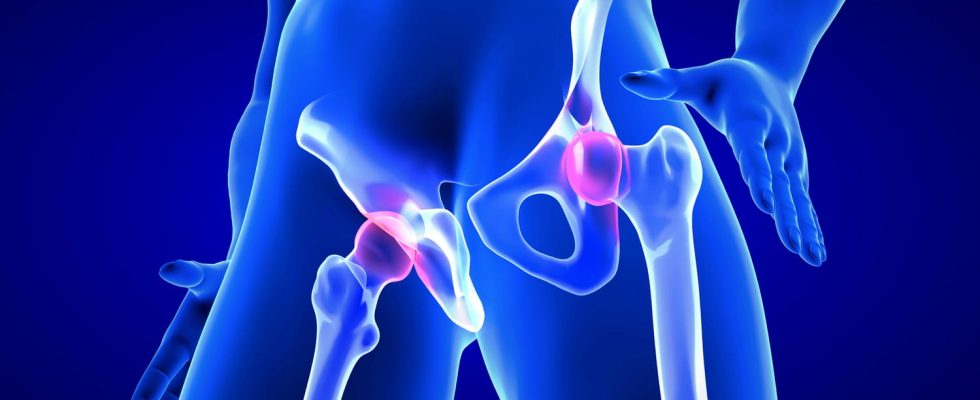Whether they involve the neck of the femur or the trochanteric mass, hip fractures are characterized by violent pain and an inability to get up. They mainly concern the elderly and require surgical intervention.
What is a hip fracture?
“In technical terms, hip fractures include one side fractures of the neck of the femur and the other of the trochanteric mass. These are two different types of fractures, which mainly concern the elderly.“, explains the specialist. These are daily fractures, rather predominantly female which will affect women with an average age of 80 years. They are one of the three most common fractures in older people.
What are the symptoms of a hip fracture?
“These fractures present the same symptoms: an inability to get up and therefore helplessness clinically functional with a limb deformity : the foot falls outside in external rotation.” Which requires hospitalization by ambulance.
What can cause a hip fracture?
“Hip fractures occur in low energy accidents, during a misstep, one foot in the carpet, among the elderly, often linked to bone fragility, osteoporosis“, which corresponds to a bone decalcification. In this case, even a minor fall can cause a hip fracture, if a person falls from a height while walking, for example. These are sentinel fractures which announce the existence of osteoporosis to people who were unaware of it. “Hence the need for prevention and carefully monitor your vitamin D level using bone densitometry.“These fractures can be encountered in younger subjects in the context of violent accidents and significant falls, but this phenomenon is rarer.
“The diagnosis is made by x-ray and from this diagnosis will result a different treatment depending on the type of fracture, that is to say its location.” Indeed, the radios will allow adapted care.
What is the treatement ?
In both cases, it is a emergency that requires surgical intervention. If it is a fracture of the neck of the femur that is not very displaced, we can try a osteosynthesis which consists of putting screws in order to consolidate the fractures. “But in the event of a displaced fracture, then surgery is necessary.“With regard to fractures of the trochanteric mass, the risk of necrosis does not exist.”It can therefore consolidate with osteosynthesis : a repair is carried out using screw systems with plates, or medullary cervical nails. If the person has osteoarthritis, we can ask ourselves the question of total overall prosthesis.”
It is impossible to walk with a hip fracture
When to consider the operation?
If the fracture is displaced, “this implies a risk of necrosis of the head of the femur.“It is then necessary to resort to hip prostheses to have a new hip. “These are fractures with significant morbidity, these patients can decompensate very quickly by lying down for too long with a deterioration in health. It is then necessary to operate very quickly to get the patient back upright as quickly as possible.“, insists the Professor. Indeed, the problems due to bed rest include bedsores, blood clots, muscle loss and loss of general fitness…
How long does it take to heal from a hip fracture?
“The operation aims to get the patient upright very quickly, as a general rule, once the prosthesis is fitted, the person recovers very quickly.“As part of a repair, the patient is up very quickly too but functional recovery is a little slower.”The management of this type of fracture is above all multidisciplinary: when returning home, it is necessary to plan home help, physiotherapy for rehabilitation, intervention by geriatricians, adaptation of housing to the conditions of aging of the subject (avoid carpets, narrow corridors, poorly lit areas) with the assistance of a Occupational therapist to check whether living conditions are optimal and suitable.“According to the High Authority of Health, rehabilitation after a hip fracture can be long, up to 12 months.
Can you walk with a hip fracture?
“No, it is impossible to walk with it a hip fracture, people cannot get up because they can no longer use the limb and pain is significant.”
What are the risks of complications?
If there is no operation in the case of a femoral neck fracture, “it can happen necrosis of the head of the femur.“These are serious fractures, their one-year mortality is not negligible.”Beyond the age of 85, 30% of patients can die from these fractures. These are patients who were already borderline to stay at home“, hence the need for multidisciplinary orthogeriatric care.
Thanks to Professor François Bonnomet, head of the lower limb orthopedic and trauma department at Strasbourg University Hospital.
